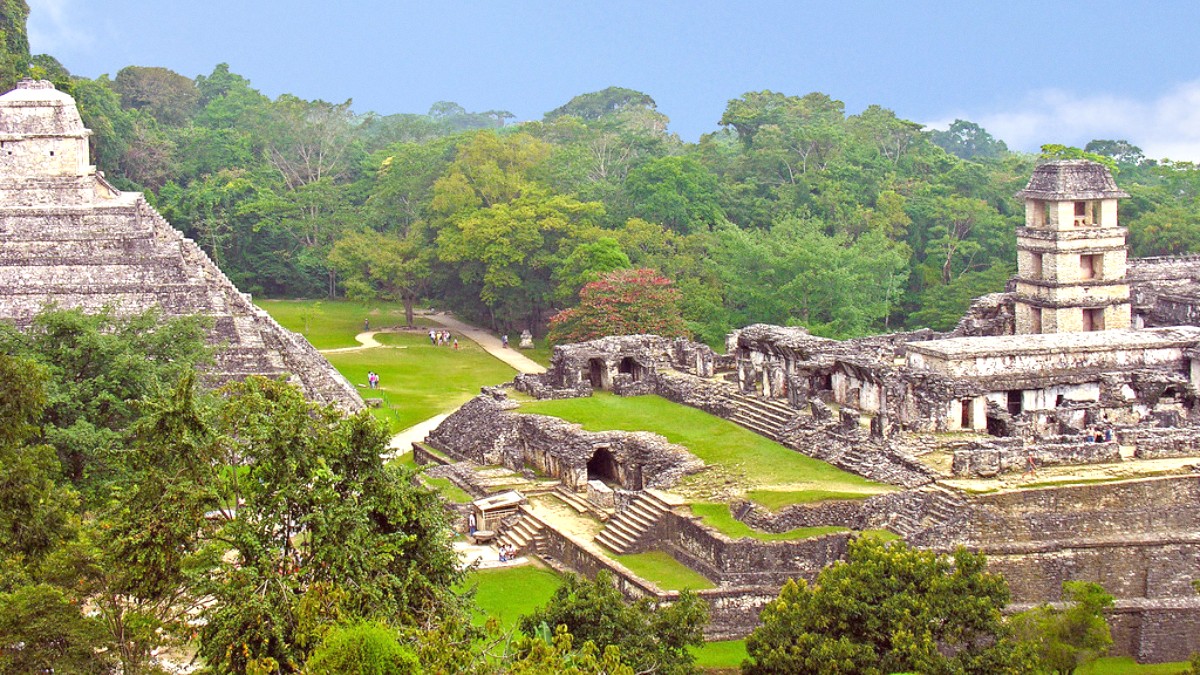
Tabasco And Chiapas, Mexico
Chiapanecan cuisine stands apart from broader Mexican culinary traditions. Food here relies heavily on fresh, locally sourced ingredients from the jungle lowlands and cooler highlands of Chiapas.
This cuisine includes unique herbs, spices, and agricultural products. Corn, beans, and squash form important parts of the local diet. Unique herbs include Chipilín and Hierba santa. Tropical fruits like mango, papaya, and guanabana are abundant.
A hearty meal, typically eaten between 8:00 AM and 10:00 AM.
Considered the main meal of the day, often substantial. Typically eaten between 2:00 PM and 4:00 PM. Many businesses may close during this time.
A lighter meal, eaten later in the evening, from 8:00 PM onwards. Many tourist restaurants adjust schedules for earlier dining.
Larger tamales wrapped in banana leaves with savory fillings like chicken or pork in mild sauce, sometimes with prunes or olives.
Find at local eateries, "comedores," and street vendors.
Local river fish (mojarra/tilapia) cooked in a foil packet with herbs and vegetables, creating a flavorful, healthy meal.
Common in restaurants near rivers or specializing in local cuisine.
Slow-roasted pork marinated in achiote and sour orange juice, served with pickled red onions and habanero salsa.
Many mid-range restaurants offer this popular dish.
Prepared as savory fried (plátanos fritos) or sweet caramelized versions (plátanos machos).
Enjoy fresh, seasonal tropical fruits available in abundance at local markets.
Limited true fine dining options. Upscale hotels/resorts on outskirts or Carretera Ruinas may offer refined dining with emphasis on ambiance and presentation.
This category presents the most choices in La Cañada and the town center. Options include local Chiapanecan dishes, broader Mexican favorites, and some international dishes.
For authentic and inexpensive meals, find "comedores" or "fondas" (small, family-run eateries) and street food vendors.
Palenque’s Mercado Público goes beyond produce. Sample local specialties from vendors for a lively, authentic, and casual meal.
A great spot for budget-friendly lunches.
Mexican and Chiapanecan cuisine dominates. Some restaurants may offer limited international options like pizza or pasta, catering to diverse preferences.
Do not expect a wide array of specialized international restaurants.
For authentic, home-cooked meals at a budget-friendly price.
Many of Palenque's authentic flavors come from these humble eateries.
A great way to experience local life without overspending.
Embrace the simplicity of local eateries for rich flavors.
Corn-based dishes (tortillas, tamales, antojitos) are naturally gluten-free. Always confirm that flour is not used.
"Soy celíaco/a, sin gluten por favor."
Communicating allergies clearly in Spanish is important. Learn phrases: "Soy alérgico/an a [allergen]." "[Allergen], no, por favor."
Common allergens: cacahuates (peanuts), nueces (nuts), lácteos (dairy), huevos (eggs), mariscos (seafood).
Google Translate with offline Spanish pack proves valuable for communicating complex dietary needs.
Carrying a small card with your dietary restrictions clearly written in Spanish aids communication with restaurant staff.
Formal cooking classes are not as widespread as in larger Mexican cities.
Chiapas is a major coffee-producing region.
Local village festivals feature traditional foods unique to the occasion.
Try Pozol for an authentic taste of Maya tradition. This beverage offers an unique and filling experience.
Made from fermented corn dough and cacao.
Thick, filling, often served unsweetened, providing energy and hydration. It has a slightly earthy, tart flavor.
A historical Maya drink.
Chiapanecan cuisine relies on fresh, locally sourced ingredients, including unique herbs and tropical fruits.
"Comedores" and market stalls offer authentic, home-cooked meals at very affordable prices.
Do not miss signature dishes like Tamales Chiapanecos, Pescado Empapelado, and Cochinita Pibil.
Always inquire about ingredients if you have dietary restrictions.